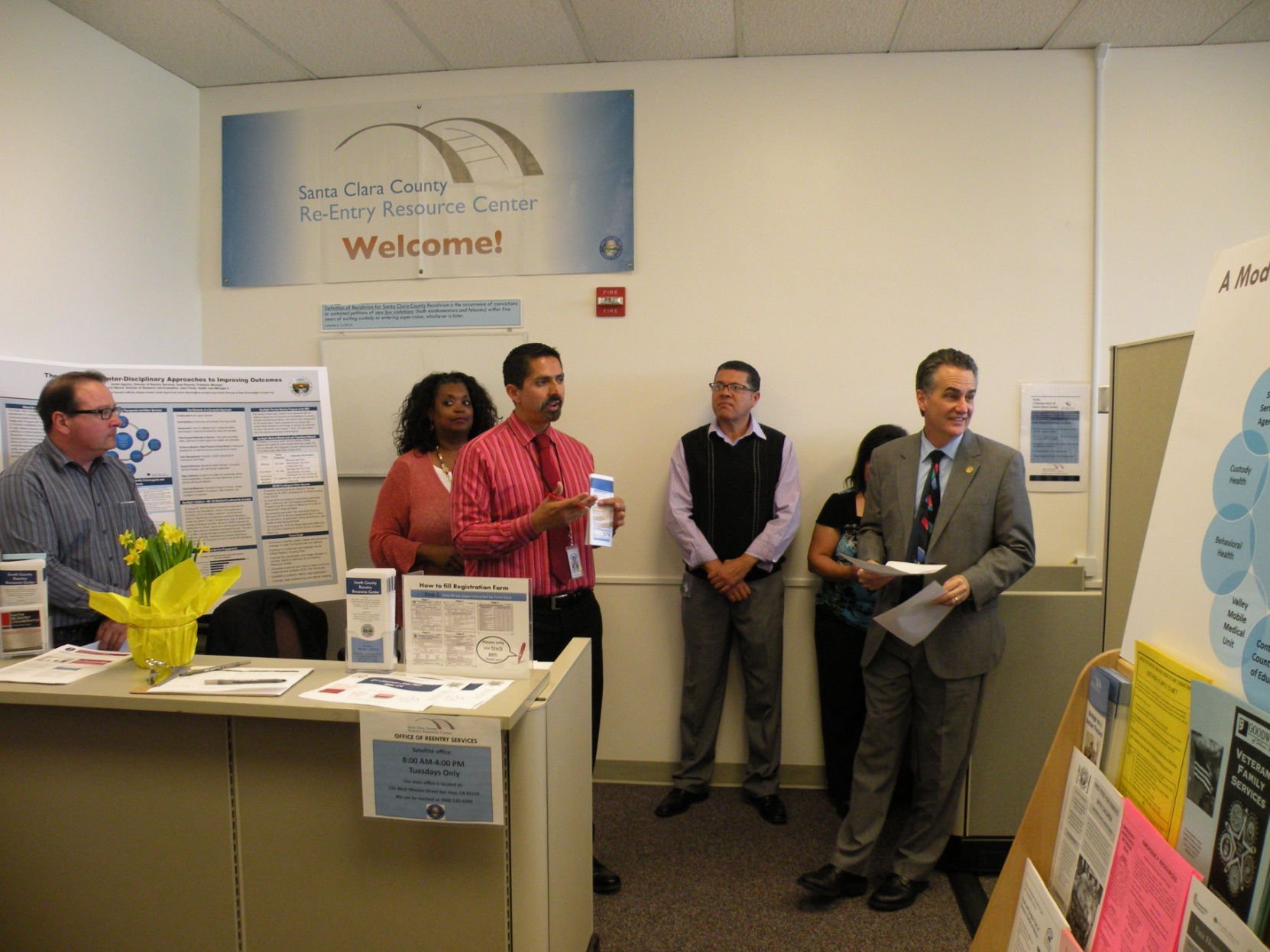Gilroy is the fastest growing city in Santa Clara County with 1,159 new residents in 2016, according to a demographics report released by the California Department of Finance New State Population Report.
The city’s population jumped from 54,777 to 55,936, a 2.1 percent increase over last year. The influx of people puts further pressure on local government to find places to house, provide services and educate the new residents.
“I think it speaks to the availability of land, the quality of life and the affordability of homes that attracts people to South County,” said Gilroy Mayor Roland Velasco.
For Gilroy, housing is an ongoing concern.
“I hope not,” Velasco said in reference to the rapid population increase. “I want to see us slow down our housing growth rate. We are kickstarting our general plan process for the next 20 years and my goal is to evaluate what our housing growth rate is. Housing doesn’t pay for itself and that means the city is stuck with the long term impacts of that housing. That starts to affect the quality of life and we see how that affects services.”
More residents increase the need for police and fire services, exacerbates wear and tear of local roadways and puts an increased burden on the city’s sewer system. Still, the affordability of homes and rent compared to the rest of Santa Clara County continues to attract residents to Gilroy.
“You can buy more of a house in South County than you can in Cupertino or Sunnyvale,” Velasco said. “We will take a look at the general plan, which will hopefully finish in the next couple of years and from that we will look at various master plans and eventually we’ll do a residential development ordinance update and that plan will dictate how many homes will be built in Gilroy.”
The city’s new growth has been partly attributed to the availability of land.
“Our population growth will be higher because we’re the only ones who have the place to grow,” Mayor Pro Tempore Dion Bracco said. “If you go to Cupertino or Sunnyvale, they all border another city. They can’t grow out as far as we can. If you want to build an industrial complex you need to buy some existing land and chances are there are already some homes on it. So where do they go? South County. It’ll be like this for the next several years until Measure H affects us until we can’t grow anymore.”
Measure H, passed by the voters in last year’s general election, is the Urban Growth Boundary Initiative, designed to limit the outward sprawl of the city. Passed to combat urban sprawl and protect prime farmland, Measure H will limit where new homes can be built in the future.
“When the existing housing projects are complete that leaves a few small parcels that can be developed,” Bracco said. “The promoters of Measure H wanted higher density, compact growth. The building going up on 10th Street and Alexander Street is what we’ll probably see more of if we have any growth at all. If we can’t go out, it’ll have to go up.”
Despite the challenges Gilroy will face to manage the influx of residents, people need to live somewhere. If not in South County, then somewhere nearby.
“People still need to live somewhere, so when they build a house in Salinas, Prunedale, Los Banos or Hollister, they’ll still need to drive through our area to get to work in San Jose,” Bracco said. “We still get the impact of the extra people, but we don’t get the benefit because they don’t pay taxes.”
Despite the passage of Measure B in 2016, a 30-year half-cent countywide sales tax for the enhancement and maintenance of transportation in Santa Clara County, local roadways will continue to be jammed with commuters.
“Measure B will help, but a lot of people who benefit from that, don’t pay into it,” Bracco said. “That’s one of the problems with this growth. If you drive into San Jose in the morning, you see the mess that’s on Hwy. 101. Probably half of those people on the 101 don’t live in Santa Clara County.”
For Bracco, the influx of residents to Gilroy from San Jose and elsewhere will challenge the city in its efforts to stay true to its rural tradition.
“Growth changes the face of the community,” Bracco said. “As more and more people come here, they expect things here that they left behind. The nightlife that they leave in San Jose is in conflict with the character of Gilroy.”
A short drive around town quickly reveals the extent of all the new housing construction currently underway. Glen Loma Ranch, a planned community of homes being built on the west side of town, was approved in 2005 but due to the recession construction did begin until almost a decade later. At full build-out there will be 17 neighborhoods with 1,693 homes.
“Since 2008 developers didn’t build, because it wasn’t profitable,” Bracco said. “When it was profitable again, all those pent up plans are being built at the same time. It looks like we’re building a lot right now, but it will drop off. Once those houses are built, there won’t be anymore, because they’ll be regulated. I’m amazed they can fill them as fast as they’re building them and to see how much they’re selling them for. It’s mind boggling to see how much people will pay to live there.”
The first homes in Glen Loma were sold last summer. Starting prices were in the high $600,000 to $700,000 range.
Developers now find themselves in a race against the economic clock. While the economy remains strong, it’s now, or perhaps never, to complete the new homes that have been planned since well before the housing bubble burst ten years ago.
The housing now under construction were planned well before Councilwoman Cat Tucker took office nine years ago.
“Years ago development agreements were made with the major developers that are building now. They were given allocations and permits and now that the economy has improved, my guess is that the developers have gone gung-ho to get as much done as they can to make a profit,” Tucker said. “Since there was an economic downturn and extensions were given, they cashed them in at once. It’s tough on the city overall and any city growing that much is challenged I think.”
Before the housing bubble burst only 300 homes were expected to be built a year. To deal with the growing demand on city services developers like Glen Loma Ranch are expected to provide certain amenities, like a new fire station or city park.
“There’s a give and take with the developers,” Tucker said. “For example, the Glen Loma Development is building a fire station as part of their negotiated agreement. They’re building all those houses, but they’re also building that new fire station. There are pros and cons and it’s supposed to be for the benefit of all parties, but the downside is that we have a huge influx of homes at once.”
While Glen Loma Ranch is expected to pay the entirety of the cost for the new fire station and the new bridge on 10th Street over Uvas Creek, the city’s infrastructure can only accommodate so much, said Tucker.
“There are limits; the city can only service so many hookups a year on our sewers,” Tucker said. “I know our staff keeps tight control on that.”
Earlier this month, the city council approved a one-time allocation of approximately $5.5 million from the city’s reserves to spend on infrastructure and staffing levels left decimated by the recession.
“Luckily we had money to be able to meet the challenge so far,” Tucker said.
As far as the new construction is concerned, like it or not, the plans will continue.
“As far as my perspective is concerned, there’s nothing I can do about it, it’s a contract and we can’t say no,” Tucker said. “Everyone keeps thinking, ‘Oh, you’ll get property taxes from all those properties,’ but those taxes won’t cover all the city’s requirements.”
For now, the city has passed a balanced city budget, but to keep up with the additional challenges from a growing population, Gilroy will need to think outside of the box.
“We can’t just rely on sales tax revenue, or property tax revenue, or utility taxes,” Tucker said. “We did some reorganization to make ourselves more streamlined and efficient. We’re considering all of these things, but it’s a long-term approach. Our current general plan projected this, so all of this was planned for. The crunch of it though is that it’s happening in such a short time frame.”
The city’s tradition of being fiscally conservative in its spending and maintaining a significant amount in reserves has kept the city afloat during difficult economic times.
“We actually have the strongest (reserve fund) in the county,” Tucker said. “We need to make sure our reserves don’t get too low, so we’re always assessing. We’re hoping to meet the projection on the budget to increase fire and police and still meet the needs of all the other services. It’s a slow approach, but I still think we’ll be fine.”
Despite the city’s planned approach to growth, many Gilroy residents will remain unhappy about all the changes happening to their small town.
“I get input from a lot of citizens and the only thing I can tell them is that this has been planned for in the general plan and it was voted for many years ago,” Tucker said. “What we can do and what the mayor is doing, is getting the roads fixed. We know there will be more people traveling on those roads. We are battling it but we are being successful.”
Second in population growth in the county is Morgan Hill, which grew from 43,484 to 44,145. San Jose added 9,724 new residents for a total of 1,046,079 people, making it the third greatest increase among the state’s largest cities. Overall, California saw an increase of 335,000 people, representing a .85 percent increase for a total of 39,524,000. The state is the most populous in the nation.















